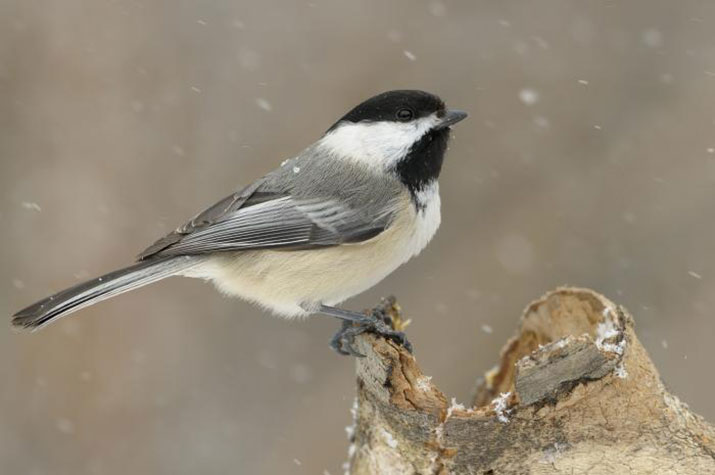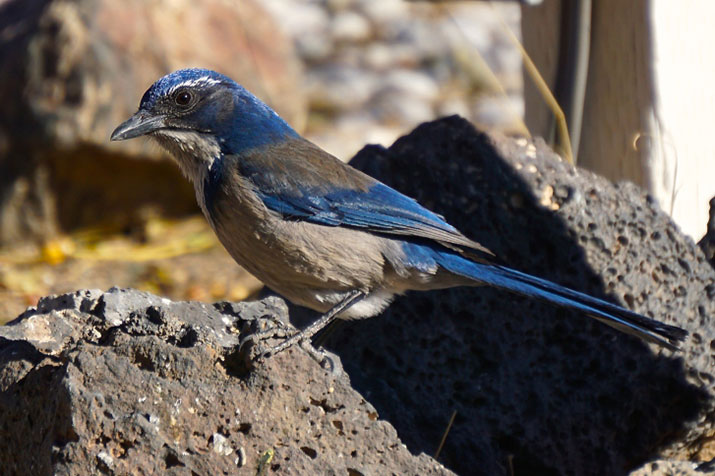Are you thinking ahead of all there is to come? You’re not alone.
Let’s dive in and discover animals that think of the future.
Chickadees
 When you rely on 10kcal a day to get by, you go above and beyond to make sure your next meal isn’t far away – at least you do if you’re a Black-capped Chickadee.
When you rely on 10kcal a day to get by, you go above and beyond to make sure your next meal isn’t far away – at least you do if you’re a Black-capped Chickadee.
During the late summer and fall, Chickadees begin to stow away food for later, only to relocate their cache in another location. In a single day, Chickadees might hide away hundreds of morsels. What’s remarkable, is they can remember precisely where they’ve planted their food for up to 28 days after hiding them away – and a single Chickadee can have thousands of reserve locations.
Not only are they able to remember where they’ve stored their various seeds and food items, but they can also recall which caches they’ve emptied. As the temperature dips, they hunt for caches storing fattening food like sunflower seeds, peanuts and suet.
Rats
 Do rats strategize ways to access food in the future? That’s what researcher Hugo J Spiers sought to find out in a 2015 study University College.
Do rats strategize ways to access food in the future? That’s what researcher Hugo J Spiers sought to find out in a 2015 study University College.
It turns out, they do. Spiers and his team of researchers placed rats on a straight track with a t-junction ahead. On one branch, they stored food and on the other nothing. Much, I’m sure, to the rats’ chagrin, both branches were blocked by a clear barrier – stopping the rats from accessing the food. Researchers gave the rats some time to try to figure it out how to access the food, and then removed them to spend an hour in a sleep chamber.
And then the magic began. While the rats rested, their brain activity linked to navigation fired up – essentially these rats were dreaming up how they could find a pathway to the food they were unable to reach in their waking hours. “What’s surprising here is that we see the hippocampus planning for the future, actually rehearsing totally novel journeys that the animals need to take in order to reach the food,” says Spiers. Worried the rats never got their munchies? Don’t fret! While the rats rested, researchers removed the barrier, and subsequently brought the rats back to the track and allowed them to reach the food.
Scrub Jays
 Researchers have known for years that Scrub Jays have a remarkable ability to remember where they’ve stored food. In fact, scrub jays can hide several thousand morsels of food every year and remember where each and every cache is located. Pretty incredible, right?
Researchers have known for years that Scrub Jays have a remarkable ability to remember where they’ve stored food. In fact, scrub jays can hide several thousand morsels of food every year and remember where each and every cache is located. Pretty incredible, right?
Dr. Nicola Clayton, a comparative psychologist at the University of Cambridge, wanted to find out just how remarkable their memories are. Did they just remember the locations they’d hid their food or did they recall the actual circumstances surrounding hiding the food? Knowing that Scrub Jays prefer larvae to peanuts (but only while the larvae are still fresh), Clayton conducted a study using these food sources, giving the birds both options to hide away. When the birds returned from caching the treats, she allowed one group of jays to return to the caches after four hours and another group to return to the caches after five days. She found that the amount of time the birds were parted from their food sources, impacted which food sources they’d scout out when they got the chance. The birds that only had to wait four hours to return to their caches – chose to dig up larvae (seeing that they’d still be fresh), while the birds that waited for five days – went straight for the peanut caches instead.
Not only were they able to think ahead about what quality of food they’ll chow down on, these amazing birds are also able to think ahead of their competition. Through generations of experience, a Scrub Jay knows that if another jay watches it hide a nut, there’s a good chance it’ll keep a mental note of where the nut was stashed, swoop in and then steal it. To avoid this, the first Scrub Jay will return to the location and move the nut to a secret location when the thief isn’t around. Smart birds!

